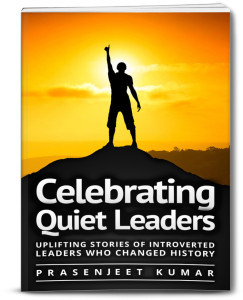Prasenjeet Kumar's Blog, page 3
April 17, 2016
Do not check your sales every day

Image Courtesy of FreeDigitalPhotos.net/ratch0013
Seriously.
Checking your sales daily is a dangerous thing to do. It encourages short term thinking.
Extremely short term.
I am assuming that you want to be a writer for the longer haul.
Checking sales daily then would damage your day in many ways. It may stall your existing projects. You may start asking what the point is! Nobody buys my existing work; so why should I write more?
You may do really stupid things like reducing the price of your book from $3.99 to $2.99 and even lower in the hope that readers may now pick up your books. What you may not realise is that the readers you would now attract would mostly be discount buyers—the ones who only buy when a book is at a discount and not otherwise.
Trust me. I’ve seen many authors doing very silly things.
One author on Kindle boards posted that she wasn’t earning enough on Amazon but Google Play came to her as a saviour. Well and good.
A few months later I noticed she had unpublished a few of her books from Google Play and made the remaining others perma-free. The what????
From a reader’s perspective, it didn’t make any sense. If I was a reader who read on my android device using the Play Store app and I happened to like this author, I could not buy any more from her. The author left me with no choice. Because she stupidly put the remaining of her books on KDP Select hoping to make more money.
But worse was yet to come. When I checked this author’s Amazon sales page, I noticed that she had made three out of five of her books perma-free.
Now that is NOT a very clever strategy if you have read Kristine Rusch’s blog post on why perma-free doesn’t work.
There are many reasons why perma-free may not work. Firstly, you are targeting readers who are freebie seekers. They move from one free book to the other and even if they like a book, they may not buy the rest of the series, because they hate paying for anything.
The next reason is even more disturbing. Many such “readers” are just hoarders! So they keep on acquiring whatever they can get for free, and never even look at it. It is not that your readers are villains of some sort, but that is how the human mind works. Do we really value anything if we get it for free?
A perma-free book may be quite like an exotic apple growing in the wild. People would be willing to spend quite a sum to buy such apples from the supermarket but when they see the same apples growing in the wild, they are very unlikely to try tasting it.
There is only one condition in which perma-free may work. And that is when you have at least 10 books in a series.
So why did this author desperately make three out of her five books perma-free?
I can only think of one reason: checking sales daily. That’s the culprit. When I used to check my sales daily, I had this irrational urge to make all of my books perma-free. The reason—you think you are better off—if readers read your book even if it was for free. Only when I read Dean Wesley Smith’s blog on this topic, did my eyes open up.
The advice is that you check your sales only once in a month. And when you do so, check all platforms—including Kindle (all platforms), CreateSpace, Draft2digital, Smashwords, and whatever. Most importantly track the amount than the number of sales.
When you price a book at $0.99, it may sell more (two to three times more in my experience) but you would earn you much less in revenue. So keep that in mind. Always remember that you need to sell six times more at $0.99 to make the same amount of money as you would if the book were priced at $2.99. It’d be eight times more if your book be priced at $3.99 and ten times more at $4.99.
Do also take in account the lag in sales reporting from all platforms including Amazon. So you must give at least a month to any retailer to let them accurately report your sales. Otherwise you would be acting on insufficient data.
Believe me—when I stopped checking my sales every day, it was very liberating. My mind focussed on writing more stories. I enjoyed myself more. I was happier. And surprisingly my revenue, the amount that was getting credited to my bank account, had also gone up.
How many authors I’ve heard saying that—indie publishing has sucked all the joy they once had for writing. I’m afraid that most of the time it is they who are to be blamed.
(For more such advice, please refer to my book “How to Market Your Books WITHOUT SPENDING A DIME” where I go into considerable details discussing the pros and cons of every marketing and promotion strategy and what’s best for you.)
Dear Readers,
I started this blog to help newbie authors, to share my experiences so that you don’t waste time travelling old paths that lead nowhere. My motto has always been to use your time focusing on what you love doing, which is writing.
However, I am a professional writer myself and earn through my books and NOT through this blog, which incidentally doesn’t carry any advertisements. So if I am not able to sustain this blog, I’ll be forced to abandon it.
If you liked this blog post, therefore, and would like me to continue sharing my views in future, in as self-less a manner as I have been doing hitherto, do please take a moment to consider supporting me by clicking on the PAY NOW button below.
The post Do not check your sales every day appeared first on Publish With Prasen.
March 19, 2016
Portraying Complex Emotions like Jealousy and Manipulation in Fictional Characters
While writing my first novel, Legally in Love, I often found myself struggling to portray such complex behaviours as jealousy and manipulation through one of the main characters in this book.
In this post, I am sharing how I finally went about tackling these two very difficult emotions.
So let’s take these two behaviours one by one.
Jealousy
 The expression, “She became green with jealousy,” just didn’t work for me because, let’s face it, no one ever becomes “green with jealousy”. So I did a little bit of research on the internet to find out how exactly a jealous person behaves.
The expression, “She became green with jealousy,” just didn’t work for me because, let’s face it, no one ever becomes “green with jealousy”. So I did a little bit of research on the internet to find out how exactly a jealous person behaves.
In that quest, I stumbled upon Kristine Kathryn Rusch’s blog. She is a USA Today Best Selling Author who has written about professional jealousy in the context of freelancing.
It was captivating to learn how a jealous person behaves. Here are a few facts:
* A jealous person is never willing to accept that the other person is successful because of hard work. Never ever. If you have seen trolls bashing celebrities or successful people on the internet or on Twitter or Facebook, they all share this common trait. They generally like to believe that:
“He/she became successful because of luck.”
“He/she bribed his/her way through.”
“He/she slept his/her way through.” (I have seen this being said so many times especially for celebrities.)
“He/she knew the right people or had contacts.” (The fact that the person may have worked hard to build those connections is often ignored.)
“He/she marketed his/her products well.” (The fact that marketing also requires hard work or the product was great is often left out.)
“He/she had a lot of money so he/she bought his/her success.” (Wish only money could buy you success.)
“He/she is successful because he/she is very charming and NOT good at his/her work.”
Or “Insert your favourite line here.”
This line of thinking is often accompanied by often pitying yourself.
“I am not successful because I don’t have enough money/beauty/charm/intelligence/or whatever.”
Makes sense then to ensure that your fictional character speaks in this way when he or she is jealous. You may use dialogues or internal thoughts to portray envy. Make it clear that the character does not want to give any credit to hard work. Not even a bit.
* Jealousy is a very destructive emotion. It destroys both the victim and the perpetrator and probably more so the perpetrator in the longer run. A jealous person believes that he/she needs to destroy the other person in other to build themselves up. They don’t believe that they can succeed because of hard work. So they spend their energy and time destroying others. This can be portrayed in various ways:
* Bad-mouthing
* Sabotage
* Intrigues
Make sure your fictional character believes that it is essential to destroy others to succeed and make him/her behave that way.
Manipulation
Psychological manipulation can be defined as “the exercise of undue influence through mental distortion and emotional exploitation, with the intention to seize power, control, benefits, and privileges at the victim’s expense.”

Like jealousy, manipulation too doesn’t use logic. It is aimed to make you feel bad or make you behave in a certain way.
There are many examples of manipulation. If you want to go in depth, you may like to check out this article.
* A manipulator behaves in extremes. They may be over polite to an extreme and then become overly aggressive. I am directly quoting from this article:
“They often start off being extremely thoughtful, considerate and attentive. They put you on a pedestal and put in a lot of effort. This is part of the grooming process. Getting you high on the feeling of flattery and feeling special is part of the manipulation. Once they have you emotionally ‘hooked’ they have a stronger position from which to start manipulating and controlling you. In some cases, manipulators lack empathy and part of the extreme behaviour involves them acting the part of a caring person. As they can lack empathy, they do not feel in touch with their emotions and have to go through the motions of acting in a way that they believe a kind, caring person would.”
Make sure your fictional character goes from one extreme to the other. For example, you may be portraying a girl who has an abusive boyfriend. Make her boyfriend to first come across as really charming. He should make her feel like he is the most caring and sensitive guy she could ever come across. And then when she is in a relationship, the abuse begins.
An expert manipulator uses many tactics to subdue the victim such as:
* Minimising: As the name suggests, a manipulator tries to minimise the effect of their behaviour on others. For example, if the boyfriend in the above scenario said mean and hurtful things and the girl reacts, he is most likely to say things like “You are so sensitive” or “I was joking” or “Why do you take such things so seriously?” instead of accepting the fact that he had intentionally tried to hurt her feelings.
* Never accept blame: In conflict situations, manipulators never accept their part in the play. The article gives a very good example of this:
“You trip over their shoes/bag etc in the night as they have placed them too near the doorway. When you fall over them you are blamed by the manipulator because you should watch where you are going or you should have turned on the light (the fact that they left their belongings where people walk is not considered or mentioned).”
* Non-verbal cues of manipulation: Like sighing, rolling your eyes or even giggling to make the other person feel uncomfortable.
* Gas-Lighting: This is a very sophisticated tactic that manipulators employ. The intention is to destroy the self-confidence of the recipient slowly over time, by making her bleed through a thousand cuts. It starts by planting false information.
“I asked you to do x, why didn’t you do it?” (Whereas in reality the manipulator never asked for anything like that). This makes the recipient wonder what is wrong with her. Why can she not take the simplest of decisions or why has she become so forgetful recently? Whether she is good enough a person/wife/mother/employee? She even starts lying to the reality twists.
Do you get the idea?
The most amazing thing about manipulation is that it comes out very clearly when you start writing it down. In speaking, it can trip anyone but when you write down you can see through what the person is actually doing.
Your dialogues may be something like:
“I asked you to do x, what happened?” said the manipulator.
“Did you? When?” asked the victim.
“Yes I did. You are so forgetful,” screamed the manipulator.
“I am so sorry. I will ensure that this does not happen in the future,” said the victim.
“You better be,” said the manipulator and so on.
Conclusion
I learnt a lot about the destructive ways in which humans can behave. Hopefully, the discussion above would have given you some idea to help construct your own jealous and manipulative characters.
And in real life, if you do come across someone who is like this, run away.
Run…Run….Run….
Dear Readers,
I started this blog to help newbie authors, to share my experiences so that you don’t waste time travelling old paths that lead nowhere. My motto has always been to use your time focusing on what you love doing, which is writing.
However, I am a professional writer myself and earn through my books and NOT through this blog, which incidentally doesn’t carry any advertisements. So if I am not able to sustain this blog, I’ll be forced to abandon it.
If you liked this blog post, therefore, and would like me to continue sharing my views in future, in as self-less a manner as I have been doing hitherto, do please take a moment to consider supporting me by clicking on the PAY NOW button below.
The post Portraying Complex Emotions like Jealousy and Manipulation in Fictional Characters appeared first on Publish With Prasen.
February 27, 2016
Writing my First Novel “Legally in Love”
I know most of us have a novel within us. And that for some unfathomable reason, we are too scared to get it out.
Believe me, I too wasn’t any different, even after writing (and publishing) 15 non-fiction books on various topics including cooking and self-help. Somehow I still considered writing novel to be sheer torture!
However, there was a story swirling around my head for a very long time. That story was urging me to get it out on paper.
It was telling me that as an artist I should be challenging myself every day. If I am not challenging myself, I am not growing. If I am not growing, I am dying. Slowly, bit by bit…
That story forced me to open a MS-Word document and just type away.
As the story unfolded, almost by itself, I realised that writing fiction could be fun. Shaping characters is so exciting. Playing around with plot twists is actually enjoyable.
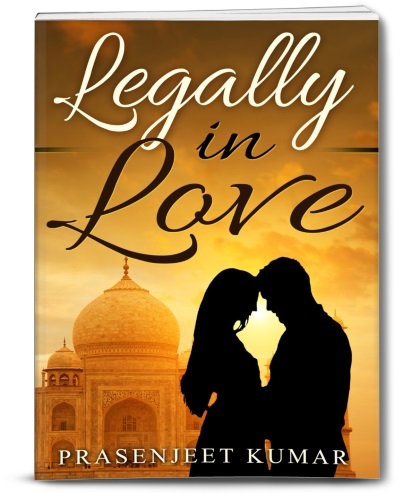 And so here it is: my first Romance Novel titled “Legally in Love”.
And so here it is: my first Romance Novel titled “Legally in Love”.
I have written this novel without a care about what others might say about my writing skills. In fact, I wrote just to entertain myself.
Now I hope that you too will enjoy reading what I enjoyed writing.
In case, you do love reading clean and wholesome romance, you may want to download a sample now.
And enjoy!
Here is the synopsis:
Meet Amit Verma, a 27 year-old dreamy corporate lawyer looking for a job in Delhi, India.
One morning, while going through his mobile phone contact list, he comes across the entry for Naina Karnad, a girl who stole his heart some two years back in his former workplace.
The problem: He has not dialled her number in a year.
Will they ever meet again?
Will their love life survive the corporate intrigues and the recession?
“Legally in love” is a powerful tale of two souls battling their way through the ruthless world of corporate office politics to discovering their true love and passion.
By the way, the book is available on all major e-book retailer sites including Kindle, Nook, Kobo, iTunes, Google Play, Scribd, etc.
You may like to first download a sample of this book at no cost by going here.
The post Writing my First Novel “Legally in Love” appeared first on Publish With Prasen.
February 6, 2016
Why won’t I be joining Kindle Scout any time soon?
Some three months back, I received an email from Amazon announcing their Kindle Scout programme for fiction authors that I just filed away because till then I had only written non-fiction.
Recently when I started writing a Romance Novel, I recalled the email and out of sheer curiosity clicked on the links.
So if you don’t know what Kindle Scout is, here is what Amazon says about the programme:
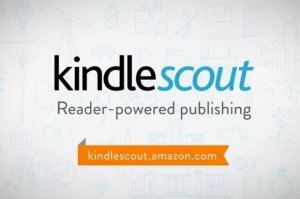
“Kindle Scout is reader-powered publishing for new, never-before-published books. It’s a place where readers help decide if a book gets published. Selected books will be published by Kindle Press and receive 5-year renewable terms, a $1,500 advance, 50% eBook royalty rate, easy rights reversions and featured Amazon marketing.”
So, in a nutshell, this is a traditional-publishing-kind-of-a-deal from your friendly neighbourhood Amazon. But let us now look at some real fine print.
First, Amazon will consider books written in certain fiction genres ONLY such as Romance, Thriller, Action & Adventure and Young Adults. The list may become bigger with time but for the present non-fiction is totally out.
Second, your book should not be published in any format, including Amazon’s.
Third, you have to give a 45 day exclusivity period during which you can’t approach any other publisher. This time is needed to enable readers to nominate your book and to let the Kindle Scout team make up its mind on whether to publish your book or not. Please look at this requirement about “nomination” very carefully because this means that you are being forced to harness your entire social media arsenal to badger your subscribers and fans to nominate your book.
Fourth, unlike a traditional publisher, Amazon will NOT be spending money on designing your book cover or in getting the book professionally edited. Your book should be complete in all respect, almost ready to be self-published, before you can submit it to Kindle Scout.
For more details, you may like to refer to the Kindle Scout website.
As an indie author, you are a writer as well as the owner of a small business. So it is prudent that you read and fully understand the terms and conditions before signing on any dotted lines.

Image Courtesy of iosphere/FreeDigitalPhotos.net
In Kindle Scout’s case, at first glance, the contract terms sound pretty decent. In fact, they sound more reasonable than the ones you commonly find in traditional publishing deals these days. If you do not know what I am talking about, you may want to refer to the deal breaker blog posts.
On the whole, I was surprised to note that, in some ways, the Kindle Scout contract had better terms than what the traditional publishers offer.
For example, it stipulates that rights revert to you:
If you make less than $500 in the first two years or less than $25,000 in 5 years.
Audio and translation rights too will revert if Amazon does not exercise the right within two years.
However, please note that the rights do not revert to you automatically. You have to specifically request for that!
Second, it is only a deal for that one book being submitted which means that you are free to do whatever you wish to do with your back list and future books.
Third, you retain the PRINT rights that NO traditional publisher otherwise allows. This is FANTASTIC. I’m pleasantly surprised because paperbacks can very easily be printed through CreateSpace which is another Amazon company.
However, there are these other things that I find extremely disturbing:

Image Courtesy of Stuart Miles/FreeDigitalPhotos.net
* Exclusivity: Amazon is taking away your World E-book rights, but unlike a traditional publisher, it is not guaranteeing to publish your books on iBooks, Kobo, Google Play, etc. So for 5 years, which is quite a long time, you are stuck with Amazon alone. Now, we all know how Amazon is trying to create exclusive content through KDP Select, but from your point of view, that may not be such a good thing. So this new programme then just sounds like a KDP Select or Kindle Unlimited on steroids.
* Auto-renewal of the 5 year term: This really bothered me. If the book underperformed (i.e. it made less than $500 in the first two years or less than $25,000 in 5 years), the rights will revert to you. But if it performed beyond expectations, the 5 year term will be auto-renewed. At least with KDP Select, you can decide to opt out (at any time even if your book is performing well) and go wide after the 90 day period expires. I feel that if the book starts doing well on its own without Amazon really promoting it, you would be losing out on readers from other platforms. The worst part is that then there is also no escape from Amazon’s clutches.
* Regarding publication, Amazon says that “other than changes we deem necessary for publication, we will not make any material change to the text without your approval.” I didn’t see the definition of “material change” anywhere. Who decides what constitutes “material change”? What if Amazon’s editors copy-edited your book introducing fresh typos and then published the book still using your name? Whose reputation will be muddied then? Yours, of course, which is not fair.
My gut instinct told me that something wasn’t right about the programme. So I decided to e-mail USA Today Best Selling Author Kristine Kathryn Rusch for her opinion. Kristine has over 40 years of experience in publishing both traditional as well as indie. She blogs extensively about contract terms in traditional publishing deals and how they harm writers’ careers.
This is what she had to say about the deal:
“Hi, Prasenjeet,
I do understand how $1500 can seem like a lot of money, but it’s very limiting. You’re worse off here than you would be with a bigger traditional publisher. They, at least, would put your work in markets like Barnes & Noble.
Personally, I think your take–Kindle Unlimited on steroids–is correct.
If I were you, I’d stay the course. However, as you said, it’s just one book. But what if it’s your most popular book?
Good luck with the decision.
Best,
Kris”
That settled it.
So personally I have decided NOT to jump on the Kindle Scout bandwagon as yet, but quite a few writers already have. Sadly there is hardly any worthwhile discussion going on in any of the self-publishing forums on the pros and cons of Kindle Scout; so I thought I should at least voice my own concerns.
We all know the dangers of going exclusive with Amazon. Five years back, authors who claimed to be earning over $5000 per month through KDP Select are now struggling to make both ends meet. I also understand Amazon’s business perspective and why they would want content which is exclusive to them. I also know that Amazon would do anything to strengthen exclusivity be it through KDP Select or Kindle Unlimited or Kindle Scout or something else. They are definitely not villains but just sensible business people.
I think we writers should also be equally sensible and look after our own interests.
Dear Reader,
I am determined to help authors make the right business decisions regarding their career. As a result, sometimes I choose to blog on a subject which is not frequently discussed or try to give a newer and franker perspective to it.
However, I am a professional writer myself and earn through my books and NOT through this blog, which incidentally doesn’t carry any advertisements. So if I am not able to sustain this blog, I’ll be forced to abandon it.
If you liked this blog post, therefore, and would like me to continue sharing my views in future, in as self-less a manner as I have been doing hitherto, do please take a moment to consider supporting me by clicking on the PAY NOW button below.
Regards,
Prasenjeet
The post Why won’t I be joining Kindle Scout any time soon? appeared first on Publish With Prasen.
January 16, 2016
How to Market Your Books WITHOUT SPENDING A DIME
Finally a Book on Marketing that cuts out the Fluff and Focuses only on the ESSENTIALS
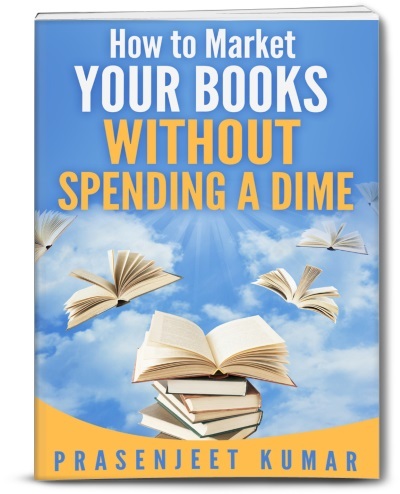 Are you bombarded with strange and esoteric marketing advice, to sell your books in 1000 ways, that leaves you baffled, bewildered and terribly confused?
Are you bombarded with strange and esoteric marketing advice, to sell your books in 1000 ways, that leaves you baffled, bewildered and terribly confused?
Do you feel that learning and mastering those complicated strategies have sucked away all the joy you once had for writing?
Then this book focusing on the BARE ESSENTIALS for marketing your book may just be what the doctor ordered.
From Prasenjeet Kumar, the Amazon #1 Best Selling Author of “Self-Publishing WITHOUT SPENDING A DIME” series of books, comes a book that after discussing threadbare all the fluff and jargon that marketing gurus spout establishes why ‘less is always more’.
At last!
This book is unique because:
* It does NOT advise you to hang out on Facebook, Twitter, Goodreads, Tumblr, Reddit, Stumble Upon, Pinterest, LinkedIn and any goddamn social media site that YOU, the writer, have to get a hang of.
*It also does NOT advise you to create podcasts or YouTube videos, to pick up speaking assignments or to waste your time contacting bloggers and reviewers.
* Instead it focuses on the ESSENTIALS that you need to do to ACTUALLY SELL your books. The rest are optional and even serious time, money and energy wasters.
* It teaches you why your time is better spent in writing, spending quality time with your family, going to the gym or watching a movie, than on those other 1000 things that are recommended for boosting the sales rank of your books.
So is this book right for you?
YES, it may, if:
* You have written at least one book and are ready to publish it. It doesn’t matter if you have even considered traditional publishing or have already collected a pile of rejection letters.
* You have already self-published your first book and in absence of a traditional publisher pushing your book, you wish to understand how you can yourself market your book better.
* You have already published a few books, tried out a few marketing techniques but are not really sure what works and what does NOT. You wish to understand how you can utilise your time and money more effectively.
This book covers the following topics:
* Should you self-publish at all?
* Pros and cons of exclusivity
* The futility of conventional marketing tactics such as hanging out on social media, contacting reviewers, entering Goodreads Giveaways, etc.
* Mindset issues
* Effectiveness of PERMA-FREE versus the PERMA $0.99 strategy
* How to engage and sell your books to your readers via e-mail marketing
* And much more
BONUS: Learn How to Evaluate a Paid Advertising Option
* Which books to promote?
* Which sites to use?
* How to avoid fraudulent sites?
* How to track your sales without the use of any magical software?
* The best form of promotion.
And more, WITHOUT SPENDING A DIME as promised.
The Book is available on Amazon, Apple, Nook, Kobo, Google Play and other platforms.
So what are you waiting for? Click Here to Buy or download a sample now.
The post How to Market Your Books WITHOUT SPENDING A DIME appeared first on Publish With Prasen.
January 11, 2016
Do Giveaways work?
Wishing you all a very Happy 2016!
In your book marketing journey, you cannot escape coming across advice about giveaways.
As the term suggests, giveaways are supposed to be a strategy to improve your discoverability and in the long run to increase your book sales. There are many ways to run a Giveaway but in this post I’ll be limiting myself to Goodreads and Library Thing.
You can give away either a paperback (e.g. on Goodreads) or an eBook (e.g. on LibraryThing) or both.
So what are the pros and cons of this strategy? Let us discuss one by one.
Goodreads
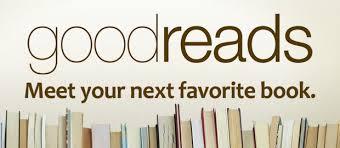
Goodreads is arguably the biggest social networking site for both authors and readers. Now owned by Amazon, Goodreads is literally the Facebook for authors. The only difference from Facebook is that on Goodreads, readers specifically discuss and rate their favourite books.
As an Author, therefore, you must have a profile on Goodreads even if you don’t actively participate in its discussion forums. Remember your goal is to make you extremely searchable, discoverable and contactable. So if you haven’t opened a Goodreads account, please go and immediately open up a reader’s profile.
Once you do that, search for your book, and click on the button “This book is mine”. You can thereafter apply for an Author profile. Once the Goodreads team approves your account, you can then have your own Author profile.
If you feel overwhelmed, here is a fantastic video on You Tube that takes you on a tour of Goodreads:
Goodreads Giveaway
One of the biggest promotional tools, that Goodreads offers, is the Goodreads Giveaway whereby you can choose to give away FREE copies of your books to participants who enter the contest for a limited time (say 15-30 days). Once the Giveaway ends, the Goodreads algorithm randomly chooses a winner and sends you her postal address.
After that, it is your responsibility to post the book to her. And if you don’t, you may be banned from running any giveaway in future.
And one more thing. You need to have a book in PRINT to be eligible for a giveaway. E-books currently are ineligible.
Goodreads Giveaways appear to be a fantastic way to get exposure and letting readers become familiar with your books and your name. Remember I didn’t mention sales anywhere.
It is just exposure. Goodreads claims 825 to be the average number of people entering a Giveaway contest, which appears to be a decent number from the point of view of any author.
In my experience, the average number of participants for my books was much, much higher. I ran around 10 giveaways in 2014, for a period of 1-3 months, and had anywhere from 900-2500 people entering the contest. The highest number was for my book ‘Healthy Cooking In A Jiffy: The Complete No Fad, No Diet Handbook’ where 2486 people joined in, and the lowest was for my book ‘Quiet Phoenix 2: From Failure to Fulfilment: A Memoir of an Introverted Child’ where I had only 899 participants.
I used to run the giveaways offering only one copy. I also used to select ‘all countries’ since I believe my books have a global audience. Mind you, doing this may increase the risk of incurring more expenditure on postage and that’s why some authors consider it prudent to run a giveaway for only countries like the US, UK or Canada.
In my experience, however, Goodreads is heavily dominated by readers from mature markets such as the UK, USA, Canada or Australia. So even if you select all countries, the chances are that the winners would be either from North America or Europe.
Giving away a single copy used to cost me around $10 from CreateSpace, including packing and shipping. So the more copies you giveaway, the higher will be your cost.
My decision was based on the feedback from other authors that whether you giveaway one copy or twenty, it has no impact on the number of people entering the contest. So if you have to run a giveaway, it may be prudent to do so with only one copy.
Let me now discuss what I exactly gained from these contests.
Goodreads Giveaways definitely give you exposure. Thousands of participants enter the giveaway contest and hundreds add your books to their reading shelves. Some even send you a friend request. However, your major concern should be whether Goodreads Giveaways really drive any sales or build up your fan base.
And this is where the problem begins. I didn’t see any uptick in my sales. Nor did I see any increase in my fan base even after running as many as 10 giveaways. I spent nearly $100 in 2014 (@$10 per giveaway) with no real positive rate of return. And this was when I was being extremely conservative about how many copies I should really give away.
So where the issue of sales or building your fan base is concerned, I will have to sheepishly admit that Goodreads Giveaways does neither. I have read many blog posts from other authors who too had a similar experience. So the problem is inherent in the Goodreads Giveaways scheme of things and I cannot blame my books or my writing style for this matter. Here is my analysis as to why this happens.
Over-saturated platform: As a Goodreads user, you can also enter a giveaway. Have fun and try to enter a few giveaways yourself. You will soon realise that there are lots of books that are listed on the giveaways page at any given time. Some participants, therefore, keep on moving from one giveaway to the other.
I have also noticed that some participants will add your book to their digital shelves in the hope that the Goodreads algorithm will favour them. Once they don’t win, they promptly remove your books from their shelves as they were never actually interested in you or the book!
Goodreads Giveaways are, therefore, like a lottery. They don’t attract genuine readers, only lottery participants. And while you may get some exposure, a Goodreads Giveaway hardly contributes to any sales or aids the growth of your fan base. If done incorrectly, they can in fact even blow a big hole in your author venture.
People don’t value freebies: You will expect that whosoever wins the contest will be thrilled to receive your book and will hopefully become your fan. Whenever the Goodreads team notified me of the winner, I made sure that I sent her a personal message on Goodreads congratulating her and notifying her of the time period in which she could expect to receive my book.
Whenever I did that, I noticed a strange behaviour, especially among American winners, in that I never received a reply from them. Not even a “thank you” or “I’m so excited” or “I’m looking forward to reading your book.” This, I thought, was the height of rudeness.
Some had even put anti-spam blocks for strangers sending personal messages; so there was no way I could contact such winners. All this peculiar behaviour did strike a very discordant note.
Winners from Eastern European countries like Romania or Cyprus, on the other hand, did have the decency to reply warmly and to follow me.
Expecting reviews: The biggest reason to run a Goodreads Giveaway is to get reviews. No winner is obliged to leave a review but this is what you, as an Author, will expect at the least.
In my case, except for one winner, who left a positive 5 star review for my book ‘The Ultimate Guide to Cooking Lentils the Indian Way’ on Goodreads and Amazon, all other winners didn’t bother to do anything.
You may say that I got a lower success rate in reviews because I ran my giveaways with only one copy. I thank myself, however, for the foresight to NOT spend a fortune running a giveaway each with 20 copies. It is just not worth it.
I ruthlessly eliminate any marketing strategy that does not convert into sales or increase my fan base. Goodreads Giveaways gets a thumb down from me on both counts.
However, if you are tempted to run a Giveaway, do so with only one copy and see what happens. You are the best judge!
LibraryThing Giveaways
LibraryThing is another site like Goodreads. The only difference is that it is more like an online library than a social networking site. On LibraryThing, you can also run a giveaway. However, LibraryThing allows you to run an e-book giveaway unlike Goodreads.
So you can choose to giveaway a PDF, Mobi or e-pub format. You can also giveaway up to 100 copies of your e-books. The best part is that a LibraryThing giveaway does not cost any money and after the contest is over, you simply need to e-mail your e-book to winners.
A giveaway for 100 copies is supposed to ensure maximum participation. It also means that there could be as many as 100 winners for your giveaway.
LibraryThing, however, has a horrible website, with difficult navigation and layout. It is definitely not aesthetically pleasing.
In my experience, a LibraryThing giveaway attracts a much lower rate of participants than a Goodreads Giveaway. So be happy if you get even 50 participants for your giveaway.
You will get a list of e-mail addresses of the winners but LibraryThing strictly forbids you to not add those e-mail addresses to your normal mailing list. So when you send your FREE e-book to the winners, you have to separately ask them to subscribe to your mailing list. Give them a link so that they can do that easily. This way, you may get some additional subscribers although in my experience I got none!
A LibraryThing giveaway does not cost any money alright BUT it can cost an awful lot of your time especially if you have to send your e-books to 50 participants. And on top of that the problem remains the same. Winners do not value freebies.
Whenever I sent a message to winners, I didn’t get even a single reply. Not even a “thank you.” After a few weeks, I only got a 2 star review from someone on LibraryThing and a few months later, a positive review.
In my opinion, LibraryThing giveaways can take up a lot of your time if you are running them regularly. There is also an increased danger of negative reviews as readers on both Goodreads and LibraryThing sites, like most book bloggers, tend to be overtly critical.
So if you have to run giveaways, do run a LibraryThing giveaway only occasionally. However, whenever you do find reviewers who rate your books positively, consider adding them to your reviewer’s list so that the next time your book comes out in that genre/series, you can contact them directly.
So what has been your experience with giveaways?
Do share your feedback for the benefit of other authors.
I’d love to hear from you in any case.
(The matter above has been excerpted from my forthcoming book “How to Market Your Books WITHOUT SPENDING A DIME” which is the third book in my “Self-Publishing WITHOUT A DIME” series of books.)
Dear Readers,
As I have been highlighting for some time, fleecing poor authors has unfortunately become a flourishing multi-million dollar business.
I started this blog to help newbie authors, to share my experiences so that you don’t waste time travelling old paths that lead nowhere. My motto has always been to use your time focusing on what you love doing, which is writing, than on doing those 1000 things that all those scam-artists bombard you with.
However, I am a professional writer myself and earn through my books and NOT through this blog, which incidentally doesn’t carry any advertisements. So if I am not able to sustain this blog, I’ll be forced to abandon it.
If you liked this blog post, therefore, and would like me to continue sharing my views in future, in as self-less a manner as I have been doing hitherto, do please take a moment to consider supporting me by clicking on the PAY NOW button below.
The post Do Giveaways work? appeared first on Publish With Prasen.
November 29, 2015
Professional Book Cover Designs for as Low as $5
As an author, you know how important a book cover design is. An eye-catching cover is the first positive cue to a reader to make him click on the thumb nail, read your blurb, and sample your book. There are no two arguments about that.
The biggest challenge you face while getting your book covers designed is, however, the cost. The thousand dollar question (because that is what some of the high-brow authors claim to splurge on a ‘good’ book cover) then is: how much should you really spend to make your book cover look ‘professional’?
In this blog, I have been discussing many paths to designing your book covers frugally. I have been advising, that till you can afford it, you don’t need to buy any fancy tool or software (including Photo Shop). You can simply take a stock photo or drawing and use Microsoft’s Word or Power point or better still, a CreateSpace template to get a decent cover design at zilch.
I strongly urge you to play around like this and create your own covers even if you are not a graphic designer. Yes, your covers may occasionally look amateurish.
But in the process, you will develop an eye for a good looking cover and learn a lot about how a professional cover designer goes about creating one. This experience can then stand you in good stead when you have to choose the right cover designer for your book.
However, that is not the topic of discussion today.
The problem I wish to focus on is how you can you find a great cover designer at a rock bottom price.
Some authors advise to try out services like the ones offered at 99designs.com. Sure, you can find some really professional book cover designers there but look at their charges, at that range from $299-$1,199.
If you are new to indie publishing, and have yet to find many readers, I have been advocating through my “WITHOUT SPENDING A DIME” series of self-publishing books to be very, very frugal. You would look quite foolish if you spent $1199 on a fantastic cover design and then have only a trickle of sales over the next three months. And if you are publishing five books in a year, you can estimate what the cost would be for those ‘fantastic’ covers alone.
Let me admit upfront that in indie publishing, with no traditional publisher backing you up with his full arsenal of marketing tools, your sales are going to be slow. In fact, you could be selling only a few copies per month (if you are lucky and this is not meant to discourage you) especially at the start of your career.
This brings me to the main topic of the discussion today, which is, how do you find a professional cover designer who you can afford? Now, your level of what you can afford could be vastly different from what I can. But if low cost meant $5 and nothing more, then we could all agree that this service could be indeed termed affordable.
You may have heard of a place call Fiverr.com where you can find people offering all kinds of services, including researching, translating, editing, ghost writing and, of course, cover designing. Now I’ll readily agree that most people on Fiverr are part-time workers and even rank amateurs.
So today I would only recommend those cover designers who I have tried out personally and am happy with. But before you contact the cover designer, I strongly suggest that you pick up your stock photo or drawing, research the genre you are writing in and the kind of book covers that you like in that sector.
How to research your cover?
Remember a professional cover designer will only act on your instructions. They are no mind readers after all! So it is your job to give them the clearest possible instructions that you can manage. Also bear in mind that a cover designer will not read your book. They just don’t have the time. Only you know the content and ethos of your book. So you should choose your stock image and model covers carefully.
You can easily find stock images for your books at low cost from Dollarphotoclub.com.
Next, research your genre. Look at the covers of well-established authors in your genre. You can easily find them on Amazon. Look at everything: colour, font type, size, image, etc. These can tell you a lot about genre appropriateness.
For example, if you are writing Romance, don’t use a blood dripping font (which is used in Thriller or Horror genres) unless your book is a Romantic Horror or a Romantic Thriller. It is that simple.
If you want to know more, there is a very nice article from Kristine Kathryn Rusch about branding and genre where she does a great job of explaining different types of covers.
You can also look at BookBub. For that you will have to sign up with your e-mail address. As you may know, BookBub is quite an expensive advertising site for authors. They are extremely picky and accept very few authors for their marketing campaigns.
Since they are extremely expensive, it is presumed that they try to give their readers the best deal possible. So they claim to pay extremely close attention to book covers, blurbs, interiors, etc. If they feel that a book cover is not genre appropriate, they won’t accept the book. So it may not be a bad idea to browse through BookBub’s offerings in the genre that you are active in. When you do that and find a few covers that you like, you can save their titles and their Amazon links in a word document.
Most importantly go by your gut instincts. Only pick those covers that you really love. Finding the right cover is a fine balance between genre appropriateness and your personal tastes as an author. This is how art is. So my sincere advice is that you should do your own research but in the end just trust your instincts.
Professional Cover Designers on Fiverr
Here are a few cover designers I have worked with and would like to heartily recommend, without being affiliated to them in any way:
Amongst the eBook cover designers I have used, Alerrandre has been the best. His cover designs are eye-catching, attractive, beautiful and look good even in a thumbnail.
Here is a sample of what I had designed using the CreateSpace template myself for my book “The Ultimate Guide to Cooking Rice the Indian Way” and what Alerrandre did with the same image.
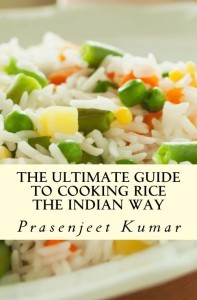
This is the cover I designed using the Createspace Cover Creator. All said and done, it is not too bad. But nothing fancy either.
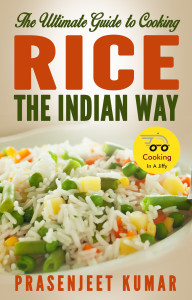
This is the cover Alerrandre designed for me. You can see the difference for yourself.
Please bear in mind that Alerrandre permits only two rounds of revision. So be extremely clear in your mind of what exactly you are looking for, when you contact him.
Please also note that while he charges $5 for an eBook cover, his rates go up to $20 for the paperback/CreateSpace cover.
* Bojan:
Bojan also does a good job designing an eBook cover and I have used him for six of my covers.
Here is a sample of what I had designed using the CreateSpace template myself for my book “How to be an Author Entrepreneur WITHOUT SPENDING A DIME” and what Bojan did with the same image.
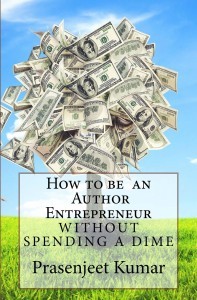
This is the cover I designed using the Createspace Cover Creator.
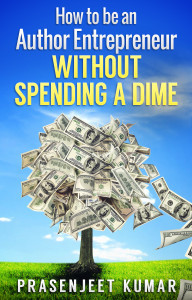
This is the one Bojan created for me.
Bojan charges $10 for your Print cover, so he is a little cheaper than Alerrandre. But there are guys who do a paperback cover also at $5. So you can hold your horses till you come to the next paragraph.
One good point about Bojan is that unlike Alerrandre, Bojan offers you unlimited revisions. But still it is best to know your mind before you approach him.
This cover designer offers to convert your Kindle book cover into a Paperback cover for just $5. My strategy then has been to first get my eBook cover designed by either Alerrandre or Bojan and then send that to RK Designs for the paperback cover design.
Just remember that you must have the final page count for your paperback when you approach RK Designs. For this, you should first format your interior, create a PDF file and upload it on CreateSpace (or your other POD service). When the file passes through the CreateSpace review process, you will get the final page count number. Make a note somewhere.
Also preview your interior files to ensure that you don’t need to make any changes. You should then go to CreateSpace cover template, enter your trim size, page count, paper colour, etc and CreateSpace will create a ready-made cover template for you. Save the template in your project folder.
When you approach RK Designs, give them the full details. Attach your Kindle cover, CreateSpace Cover template, your back cover description and your author photo. They will then take 24 hours to design your Print cover.
Once they send you your Print cover, download the pdf on your computer and proof read everything to ensure that there are no typos. If you find one, then click on “Request modification” on the Fiverr Dashboard.
If everything is fine, I would still recommend NOT to ‘complete the order’ at this moment. First upload the cover on CreateSpace and let it pass through the review process which typically takes a day. Sometimes there could be minor difficulties.
The spine width, for example, could be too wide or too small or there may not be enough space to place the barcode on the back cover. In that case, you will have to click “Request Modification” and copy/paste the comment you received from CreateSpace. RK Designs is very cooperative and makes all the changes that you request.
Another important thing you should keep in mind is that if your page count is less than 130 pages, you should keep your spine BLANK. There should be NO lettering on your spine in that case.
Most of the time, RK’s paperback cover designs pass through the CreateSpace review process in a breeze. However, if there are any problems, RK Designs is extremely responsive.
How to write your instructions for cover designers?
When you are writing to them, give them some very basic details like your title, sub-title, author name, size: 1600 pixels wide x 2500 pixels long (I recommend this size because the cover then fits well everywhere Kindle, Draft2Digital, Google Play, Smashwords, etc).
Next send them a link to your sample covers on Amazon. Give them at least two or three so that they can get an idea of what you are looking for. You may also indicate where (top, bottom or middle) would you like the designer to place the title or your author name. I indicate this but also include that I leave the designer to exercise his or her full artistic freedom to ensure the best results. If you have knowledge on the type of font to use, you may include that as well but at the least send them the links so that they can understand your tastes and/or try to read your mind!
You may attach your instructions in a word document as there are character limitations on Fiverr. Also attach your stock image and you are done. Your cover designer can take off from there.
Your e-book cover design should then cost $5 + the Print cover should cost another $5. The total =$10, which I think is very reasonable for any fledgling author venture.
I hope this is helpful. Feel free to leave your comments below.
Do you know of any other cover designer who had done a god job for you around $5?
Have you used any other Fiverr Cover Designer, at any other price point, that you would be happy to recommend?
Have you tried any other site like Elance.com or Paypeopleperhour.com? If yes, how was your experience?
By the way I am currently trying my hands at writing a Romance Novel (my first). I shall keep you updated in due course.
Regards,
Prasenjeet
The post Professional Book Cover Designs for as Low as $5 appeared first on Publish With Prasen.
November 6, 2015
Should you split your novel into smaller parts just because others say so?
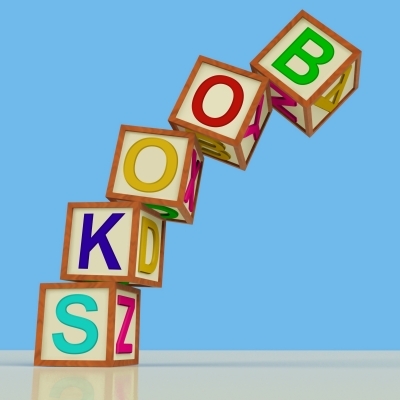
Image Courtesy of Stuart Miles/FreeDigitalPhotos.net
A few days back, an aspiring author contacted me asking for some advice related to the above intriguing query. Since the issues raised are important, I am taking the liberty (with the author’s permission) to reproduce the e-mail in full as below:
“Hello Prasen. As a fellow introvert and author on the edge of launching my first book I really appreciated your free ebook on how to publish without spending a dime. Also, I have spent about 20 years in the IT field and one day I woke up and realized I wanted to be a writer. My books are quite a bit different than yours-I write about zombies! Though I do have plans to diversify into other genres once I get these going.
I do have my book completed and I have a couple of beta readers going through it before I begin the publishing process. Thus I don’t have anything on Kindle to show you. However, I appreciate your open offer to help newbie writers and I wonder if I could trouble you for some advice that I don’t think you had in your free ebook about publishing. Maybe you could even answer them as a blog post so it can be shared with other emerging writers?
I have 3 books written, each about 100k words long. But after reading your advice about publishing more books rather than just a few, I began to consider breaking each of those books in half so that I could publish a series of 6 books instead of just 3. Is there any advantage to a long word count in a book in the self-publishing universe? Would you publish them all at once or string them out over a period of weeks or months?
I recognize there are a million little things that need to happen from the last word of a book until it shows up in digital storefronts, but the one thing that seems missing is a place where we (new writers) can get advice from seasoned veterans. As I said I’m an introvert by nature and I hate trawling the web looking for forums where you can ask questions. It was just happenstance I found your site, saw your books on introverts, and thought you were someone I could actually talk to. There are a million questions that can’t be answered by reading blogs. Did you seek communities or did you figure it all out by reading on your own?
Your section about using stock images is a little out of date. Fotolia seems to have been taken over by Adobe (maybe they always were?) and Dollar Photo Club was shuttered and taken over by…Adobe! Any advice on cover imagery outside of what you wrote in your book?
I love your advice on saving money. So many websites claim an author cannot publish successfully without spending US$5-10,000 for things like PR, book tours, and the like. There must be a lot of people flushing their money away. But if you were given $100 and you HAD to spend it on your next book, what would you use it for? Imagery? Editing? Audio?
Thank you for your time.”
E.E. Isherwood
And here is my reply:
Hi Isherwood,
Thanks for reaching out to me. It is always a pleasure to help out a fellow writer.
Before I proceed further, I must start with a few caveats. First, the world of publishing is in a constant flux. Technology is improving, algorithms for deciding your books’ sales rank and even discoverability are changing, old trends disappear and new trends emerge, what worked once as promotion no longer works, and so on.
But the only thing that still works is listening to your heart and being true to yourself. So keep this in mind while I try to answer all your questions. 
Should you break your novels into smaller parts? Nope. That’s a bad idea.  Not only will it create unnecessary hassles for you but may mess up your entire story, characters and plot line. This strategy (of breaking) may work better in non-fiction. For example, suppose you were writing a cookbook and had both chicken and fish recipes. You could probably split the book into two: one with chicken and the other with fish recipes. However, in fiction, if you did that, I seriously believe that you may end up compromising on quality (which is absolutely essential). Anyway that is purely my opinion but I can give you a list of questions that may help in determining whether you should split your books into smaller parts.
Not only will it create unnecessary hassles for you but may mess up your entire story, characters and plot line. This strategy (of breaking) may work better in non-fiction. For example, suppose you were writing a cookbook and had both chicken and fish recipes. You could probably split the book into two: one with chicken and the other with fish recipes. However, in fiction, if you did that, I seriously believe that you may end up compromising on quality (which is absolutely essential). Anyway that is purely my opinion but I can give you a list of questions that may help in determining whether you should split your books into smaller parts.
* What happens to your plot? Will it end abruptly because you chose to split it into smaller parts?
* How about your characters? Will you leave out something/someone essential and interesting?
* What about your twists in the plot? Will you leave something unanswered that instead of tickling the readers’ curiosity dissatisfies or even annoys them?
* Will you compromise on overall readability? Your readers pay for reading the whole story and not bits and pieces of it.
Writing more books: I sincerely advise writers to write more books because writing more books simply makes you more discoverable. Plus the readers who love any of your books have the option to buy more. Think of this like a book shelf. Will you notice one book by a writer more than if he had ten on the same shelf? In my writing career, I have tried all sorts of promotion and whatever growth I have seen in revenue is only because I have written more books. That being said, I really don’t believe that you should split one book into many. You won’t do justice to yourself and to your readers. I suggest leave all of your books as they are. I am sure you will have plenty of ideas and creative juices left to write Books 4-infinity. 
Is there any advantage in writing longer books? Well, if you go exclusive with Amazon, they have a programme called Kindle Unlimited where you are paid @ per pages read. This means that the longer your book is, the more you may get paid (provided your readers keep the pages turning). However, there are real dangers with going exclusive with Amazon. If Amazon is your only source of income, think of the hit you will take if something happens to Amazon. Plus you will lose out on finding readers on iBooks, Kobo, Nook, Google Play, etc. There are many pros and cons for exclusivity and you are the best judge to decide what is best for you at a particular juncture in your writing career.
I believe that you should be sincere to art. Don’t write longer or shorter books because others say one is “profitable” than the other. A few years back, many authors were advising in favour of writing shorter books and I refused to buy the idea. Now Amazon has its own way of punishing authors who write shorter books. This is what I said in the beginning. Algorithms change. Trends change. What you can do is to be faithful to your art. Feel free to write a 100,000 word novel or a 30,000 word one, whatever you think will do justice to your story.
Should you publish your books all at once or space them out? Since I write one book at a time, I publish it that way. Write one book, publish it, market it and then write another and repeat the process. However, if you have already written three books, and if you can deal with all the logistics (of editing, cover designing, formatting and so on) you may like to publish them altogether. I see no reason why you should then space out publishing.
Your question about whether I seek communities or figure out publishing all on my own: I really don’t like to hang out on many fora. In my experience, you generally get very wishy washy advice on most hang outs. I do, however, follow a few blogs which give really helpful advice to other writers. Here are a few of them:
Business Rusch: This is a blog by an author named Kristine Kathryn Rusch. She has over 30 years of experience in publishing both traditional and indie. She is like a parent when it comes to advice on writing. Here is her blog: http://kriswrites.com/category/business/
The Creative Penn: Author Joanna Penn also has a fantastic blog which is very helpful to writers. Here is her blog: http://www.thecreativepenn.com
Your question about stock images: You are right. All these stock image websites also keep changing. Fotolia has become pretty expensive. I think Dollar Photo Club is still cheap. Even if you have to pay a few extra dollars, it could be worth the cost. You can also go to one of the fiverr cover designers who can both find a stock image and then design your cover.
You can also shoot your own images with your camera. I have done that for a few of my cookbooks but really don’t know how you can shoot images relating to zombies? 
If I had $100, where will I spend it? I was faced with this question. I had $40 to spare. I considered using Book Gorilla which is an advertising site for books. However, I realized that this will be a very short term investment. You get a spike in sales which will only last for a few days. Plus the dangers of losing money. So instead of spending $40 on advertising, I chose to re-design my book covers by hiring a professional for $5 from Fiverr.com. Your book cover improves your packaging and makes a real promise to your readers. So if you have to spend money, spend $5 to get a professional e-cover design. And then spend another $ 5 or so to convert that for your print version. In addition, you may need another $5 for a stock image or $10 for two stock images that need to be combined to get that special effect. I have already talked about editing without spending a dime so there is no need to spend money there. For marketing, you can try out BK Knights for another $5 simply because this guy returns your money if he doesn’t succeed in getting you more sales.
What happens to the rest of $80 or so? Save it for the future or invest in mutual funds so that it keeps growing.  This is what I would do. Please don’t take this as an investment advice. Your writing career is very uncertain and your book sales will go up and down. So it is best to protect yourself from the downside.
This is what I would do. Please don’t take this as an investment advice. Your writing career is very uncertain and your book sales will go up and down. So it is best to protect yourself from the downside.
I hope I have answered all your questions. Feel free to contact me, should you have any more doubts. I wish you all the best with your writing career.
Would you mind if I published this answer with your question on my blog to help other writers?
Regards,
Prasenjeet
And this is what Isherwood wrote back:
“Wow! Thank you so much for your time and response. I would love it if you posted your response on your blog. I don’t mind if you mention me by name as E.E.Isherwood. Hopefully it will help others.
I don’t want to publish exclusively to Amazon. My plans match the advice in your book. Publish in as many places as possible, get it in front of many different audiences. See what happens. I want to do audio versions. Translations. The whole works.
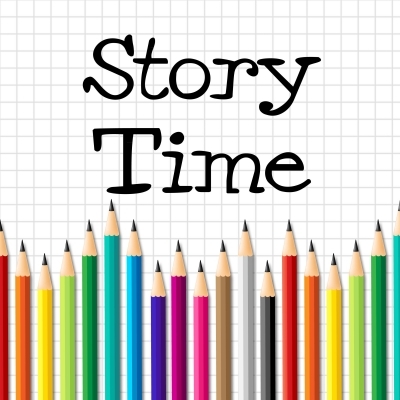
Image Courtesy of Stuart Miles/FreeDigitalPhotos.net
As a quick response I’d like to say I did consider the story arc when thinking about breaking my books apart, but you bring up excellent points about quality and readability and especially delivering a quality product to our readers. I wrote my 3 stories to be conjoined as a trilogy. There are moments of foreshadowing. Clues placed in book 1 that are solved in book 3 and everything works together both to give an enjoyable series of independent stories and a satisfying (I hope) trilogy. I could break them into 6 smaller books, but I’d probably have to spend a lot of time ensuring these elements still worked, as well as ensuring the breaking points made sense and were satisfying. I think I could do it, but at the end of the day your advice is spot on–I could just write another book! I do indeed have a vision of the world I created (or destroyed, since we are talking about zombies) and the number of books I could write is only limited by my time.
I’ll be checking out the links you provided, plus those in your Ebook. I’m a do-it-yourself type of person, so your advice really hits home with me.
I’d also like to publicly say thanks on my tiny blog and on twitter. Is there any link to your site/books you’d prefer me to use? I’d like to help you out for your time in any way I can.
Thanks again for the lengthy and very helpful response.”
What are your views, dear reader?
Have you ever been advised to split your novel into smaller parts? Did you follow that advice?
Do you prefer to write longer or shorter books? Are there any blogs that you follow for advice?
If you had $100, where would you spend it?
Feel free to leave your comments below.
The post Should you split your novel into smaller parts just because others say so? appeared first on Publish With Prasen.
October 1, 2015
Celebrating Quiet Leaders Now Available on All Major e-Book Retailer Sites
I was always intrigued by the question whether introverts can really lead? And if yes, can they just lead, as any imbecile hereditary heir to the throne is expected to, or provide legendary leadership?
We do live in a society where it is drilled into our heads that in order to successfully lead you must act assertively, boldly and be willing to take the centre stage. In the process, not only do you have to be fine with such ‘qualities’ as arrogance and over-confidence but in some circumstances it is even considered desirable to carefully cultivate such traits.
If you are quiet and shy, you will be asked to overcome your “shyness” or “introversion”. Or forget your dreams of leading anyone.
“Awaken your extroverted self”, they tell you.
Let me clear the misconception right away. Introverts cannot only lead but make outstanding leaders.
For my research, I had to plod through quite a few books and articles on introverts who History recognises as successful leaders. And I was surprised with what I found.
I discovered that introverts were not only successful as leaders but ultra-successful! And most of them are so extremely well-known that you will be surprised.
More importantly, they succeeded not because they could overcome their introversion, BUT because of their introversion.
Introverts have been successful in supposedly all extroverted fields of leadership be it military, politics, academics, or religion. Some led their troops into the battlefield (valiantly and violently) while others led quietly, non-violently or passively.
So what has made these introverts so successful?
Introverts are gifted with some natural strengths which if utilised well can turn any quiet person into a successful leader. First among these is a rich imagination.
We speak less but think a lot. The outside world does not know what we are thinking. But the same thought process can lead to a vision or a dream.
Every successful introverted leader in the ‘stories’ narrated in Celebrating Quiet Leaders had a rich vision. He or she dreamt of seeing her people free or envisaged a nation that safeguarded the health and happiness of its people.
Next, these leaders took small but concrete steps to set up institutions that delivered results and carried forward their vision even hundreds of years after they were gone.
Third, they had, like all introverts, an analytical mind and were cautious by nature. You may think that a cautious person may not excel in military matters where throwing yourself straight into the battlefield is considered valour.
But you may be amazed to know that some of the greatest military generals in history were defensive by nature.
They were able to pull off some amazing victories only because they took the time to think, plan and act decisively. They carefully studied the terrain, tactics and the weaknesses of their enemies. And they didn’t lead by making grandiose speeches but by setting an example.
Which takes me to the fourth point. Introverts by nature do not like to be the centre of attention. Then how can they make excellent leaders?
Remember the old saying “Action speaks louder than words.” We live in a world where our so-called leaders promise too many things (eloquently) but deliver on none.
For introverts, it is easier to act than to say. This is a strength NOT a weakness. And this is what makes people believe in your integrity and character.
In many of the stories in Celebrating Quiet Leaders, you will read about how shy people kept sitting when they were asked to stand and then driven by an inner voice picked up a broom and started sweeping the floor that led to the greatest revolutions of all times.
These were all simple acts. There was no grandiose, no earth-shaking act of bravery and yet the outcome took quite a few breaths away.
As a leader, you are expected to make speeches. But if you don’t like making speeches, how on earth can you then lead a revolution?
Don’t worry. I find that when introverted leaders spoke, they spoke out of conviction. Their speeches touched a chord because it came straight from their hearts. As an introverted leader, it is easier to speak when your passions are aroused.
You may be shy in real life and troubled by bullies but when you see someone chopping a tree or shooting at a bird your passions are aroused. You are no longer shy or afraid to confront. You may even risk your life by standing up to protect a tree or to save a bird’s life. And you are not alone.
Your fellow quiet leaders that you are about to meet in Celebrating Quiet Leaders had all their passions aroused at some point. Though reserved by nature, our quiet leaders stood up to take cudgels and when they did that, they did so brilliantly.
And finally a word about religion. You may think that most prominent religious leaders were extroverts who carried God’s message eloquently. But let me surprise you once again: they were most likely introverts who just felt a close connection with God or their “inner selves”.
Celebrating Quiet Leaders contains stories about military, political, academic and religious leaders but the same principles can be applied to any business set up.
So, ladies and gentlemen, be prepared to immerse yourselves into tales of courage and valour shown by quiet, shy and sensitive men and women from ALL AROUND THE WORLD. You will read how these quiet leaders faced the biggest challenges and threats of their lives and how they rose from the ashes like the legendary Phoenix bird BUT quietly.
Like a ‘Quiet Phoenix’, as I call this series of books.
Most of these leaders are well-known. Therefore, in order to keep the mystery going, I have tried to hide their true identities just a little.
Warning: Don’t be surprised if you find that these leaders sound quite like you.
And even if you are an extrovert, I am sure you will learn a lot about leadership in general.
The post Celebrating Quiet Leaders Now Available on All Major e-Book Retailer Sites appeared first on Publish With Prasen.
September 5, 2015
From 0 to 1000 sales: Why is that a landmark that we need to talk about

Image Courtesy of FreeDigitalPhotos.net/2Nix
I published my first book How to Cook In A Jiffy Even If You Have Never Boiled An Egg Before in September 2013. This was a simple college cookbook based on my own experiences of surviving the London hostels for four years as an international student.
I remember going through the full gamut of writing, editing, formatting, and cover designing and publishing all by myself, bumbling around quite a bit and losing my way once in a while. I had to do research and watch a lot of YouTube videos to understand the entire process. After doing everything carefully, I hit the publish button and kept my fingers crossed. After 12 hours, I received a notification from KDP that my book was published and available to buyers around the world. It was a dream come true. I celebrated with my whole family, while excitedly checking different Amazon sites such as amazon.com, amazon.co.uk and amazon.in (I live in India) to find that my book was actually published in all these territories.
I have since added 12 more titles and 7 translations. However, moving from 0 sales to 1000 was a personal landmark. Financially, 1000 may or may not be a big number for you, but it was certainly an achievement for me.
Why is 1000 so important? For two reasons. Firstly, most books, even traditionally published ones, do not sell more than 250 copies in their entire lifetime, yes LIFETIME, I repeat.
Secondly, 1000 sales definitely means that strangers are buying your books and that you have finally moved beyond your circle of friends and family members. Well, I didn’t need to touch 1000 sales to prove that strangers were buying my books. I knew this was true from day 1, because from the day I informed my relatives about my first book, I didn’t get any sales for the next three months! In fact very few people even bothered to reply to me.
My biggest source of satisfaction was that I had achieved this mark all by myself without any big publisher or influencer backing me, and without using paid advertising services. In fact, WITHOUT SPENDING A DIME.
A thousand sales was not the only achievement. As I’ve mentioned, I also wrote more than 12 books in three genres—cookbooks (Cooking in a Jiffy series), motivational books for introverts (Quiet Phoenix series) and on self-publishing (Self-Publishing WITHOUT SPENDING A DIME series). On top of this, I also published seven translations of my books into Spanish, Portuguese, Italian and German. I sold books in over 29 countries, including Azerbaijan, Russia, Vietnam and the Philippines where I don’t think any traditional publisher would bother marketing me.
The wait to reach the first 1000 sales can, however, take quite a toll. There may be sniggers from your so-called friends to concerned glances from your family about how will you now service your mortgages and student loans.
But if you keep yourself busy just writing more books, you will realise that time just flies. When I look at my first book, I feel as if it was published ages ago even though it was only published two years back.
In fact I feel that my first two years were simply the beginning, the process of wetting your feet, so to say. The fun will start now.

Image Courtesy of FreeDigitalPhotos.net/ddpavumba
In London, when we applied for a job with any prestigious English law firm (I am a lawyer by training), our first two years were referred to as the “Training Contract” and us as “trainees”. The same system is followed by other professions around the world. When we completed our training contract, we were called NQs or “Newly-Qualified”.
In a day job, nobody expects to be promoted to the highest level on day one, regardless of your qualifications, brilliance and aptitude. In fact even nurturing such a notion would be considered laughable. What happens to us then when we start our writing career? All of a sudden we want instant success. We want our books to take off on their own. And if nothing happens for a few months, we consider ourselves a “failure”.
So if you ask me, I am going to tell you that ‘Yes, I have just completed my training contract in my writing career’. You can now refer to me as NQ or “Newly Qualified” with the first 1000 sales and a couple of foreign translation sales under my belt.
In this post, I intend to share my ups and downs. I will analyse what worked for me and what did not work for me. I feel that I have figured out a system (and it does not depend upon gaming the Amazon system) that I can use to move from 1000 to 10,000 mark and then 1 million.
Every writer is different so I cannot claim that what worked for me will also work for you. I consider myself a fast writer and do not have any problems finishing my projects. Your situation may be a little different. May be the advice that you should write more books drives you crazy and makes you feel that you will burn out soon. Or maybe you feel that no matter what you do success won’t happen. In that case, try to find what works for YOU.
So let me “rewind” back in September 2013. I celebrated the release of my first book. However, that happiness was short lived as soon as I realised that I had to do something to drive sales.

Image Courtesy of evanescentepiphany.wordpress.com
I didn’t make any sales for the next two months. This didn’t shatter me but made me more determined to succeed. I tried to read as much on book marketing as possible. I also read whining stories of other authors in discussion forums. Most of the authors complained that they were not making enough sales and I thought (at that time) that they were complaining too much. At least they were making some sales whereas I was making none.
I made my first sale in November 2013 and that too in the amazon.co.uk store. That was another moment for celebration and yes, after that we vowed to celebrate each and every sale in a new territory.
In the whole of 2013, I only sold 10 copies which does not seem bad now as I had just started then. By the end of 2014, I sold around 470 books (Createspace inclusive). And the process was unstoppable after that.
So let me share the things that worked for me and did NOT work for me in the two years of my “training contract”.
Things that worked for me
Whether writing more books advice works?
Let’s suppose I had written only 2 books in 2 years. Would I have reached where I am today? Not at all. In fact I would still be in the 2013 mode, struggling to make sales. So writing more books definitely works. Not to forget that I wrote in three completely different genres and got feedback from (and discovered by) three different group of readers.
However, there is one more thing. You need to be extremely disciplined to keep producing books. No matter how many books you read or courses you attend, nothing works if you don’t commit to writing. If you want to write 1.5 million words in a year like Sean Platt, Johnny B. Truant and Dave Wright do, then you will need to write at least 5,000 words per day for at least 300 days (assuming that the other 65 days you are resting or doing something else).
If you take two hours to write 2,000 words per day then you will definitely need to spend five to six hours writing. It’s that simple. So what are you waiting for? Go ahead and just write.
Patience: I don’t think we are born with patience. In fact, I am not sure whether the human brain is hard-wired for patience. If it came so naturally, the Buddhists would not have spent thousands of years training the human mind for patience. If you lack patience, cultivate it even if it requires meditation or focussing your mind on something else other than the result.
When I first published, I could have said that selling books (getting even a single sale) was a fantasy. Moving from 0 sales to even a few seemed impossible. So I decided to focus on the process than on the end-result (which is sales). Moving from 0 to 1000 was quite overwhelming. So my advice would be to take things one at a time and to remain focussed on the journey.
Positivity: I have had this debate so many times in my family. Having a positive mind does not drive your sales. So why remain positive and optimistic? What good can come out of it?
While it is true that positivity does NOT change anything in the external world, it alters your personality and your way of thinking. Positivity tells you to keep trying and if you don’t succeed, try to find something else till you consider yourself successful. And that’s really it!
Positivity does NOT guarantee that you will succeed. Nor does Negativity guarantee failure. But your way of thinking definitely alters your behaviour. A negative person will think that no matter what he does, he will always fail and as a result he would stop trying. A positive person on the other hand thinks that he should keep taking action, keep learning, and adjust when required.
There were many instances where positivity helped me personally. My sales plummeted in February 2015 and that too after writing nearly 10 books. I could have given it up and said that there was no point in writing more books. But I always tried to figure out the reason and even when the reasons were not so obvious.
I had till then kept all my books in KDP Select and still I was NOT benefitting. I read experiences of other authors in KDP Select and realised that it was better to publish on all platforms than to put all your eggs in the Amazon basket. I soon did that and have not since regretted my decision. I now get 30% of my sales from other platforms, with Google Play contributing the maximum.
Anyway this was not the sole reason I embraced positivity. I have really thought about my vision of an ideal person. Have you seen people who are always bitter about life, bitching about everything? Would you want to be friends with such people? No, you will want to run away from them. And this is the major reason I did not want to be the kind of person who people want to run away from.
Writing in multiple genres: Writing in many genres helps, provided you are publishing more books in that genre. In some months, my cookbooks sell well and in other months my Quiet Phoenix series and Self-Publishing WITHOUT SPENDING A DIME series outsell my cookbooks. I have yet to decipher the logic as to why and when this happens, but that’s how it is and I have no option but to respect the ‘market forces’.
Publish in as many formats and in as many places as possible: When I first started publishing, I always heard the argument that “Print is Dead” and believed it. I thought that seeing your books in Print was a very 20th centurish desire and had no place now. It was my father who wanted to see my books in Print, and so I learnt to publish my books via Print on Demand (POD). I still remember that I published my first CreateSpace book on the date of my 29th birthday (8 October 2013) and my father promptly ordered three copies to show off among his friends!
However, CreateSpace, a year down the line, has now become an important stream of income. I am glad that I published my Print books through CreateSpace and did not believe the many self-publishing gurus who were recommending against this sector.
The same logic applies to publishing your e-books to Google Play, Apple, Kobo, Nook, etc and your translated books through Babelcube. They have all by now become small streams of income complementing my Amazon sales.
Ups and downs happen, so do not worry: Some months are great while others will make you doubt your own abilities. In August 2014, I sold a grand total of 17 books only. It looks disappointing but if you see the bigger picture (i.e. total sales in a year or more), it does not look too bad. Downs will happen. I am always prepared for that. But that does not mean I will give up on my writing dreams. So whenever you are having a bad month, don’t brood too much about it and distract yourself by completing your next project.
Pricing is your best marketing strategy: Always remember that your goal is to attract new readers and to slowly build your reputation. The best way to do is to play around with Free or $0.99 pricing strategies and see what works.
Not too dependent on paid advertising: I feel really pleased that I achieved my target of 1000 sales without blowing a hole in my author venture. I achieved this target without paying money to any major advertising sites like BookBub, Book Gorilla or E-Reader News Today. So, I feel it is possible to build a book business which does NOT heavily depend on paid advertising.
Keep Learning: I read a lot and my favourite books that I read last year was The Compound Effect by Darren Hardy and The Principles of Success by Jack Canfield. These books helped me change my mind-set. I learnt to focus on small things and to revel in every small success. And I wish to retain that mind-set for the rest of my writing career.
Things that did not work for me:
Goodreads Giveaways: While running a Goodreads Giveaway may get you some exposure, it costs you money and does not have any positive return on investment. In 2014, I ran around 8-10 giveaways that cost me around $100 and did not at all pay me back in sales. I will do a detailed blog post some day on my experience but this year and in the coming few years, I have decided to stay away from Goodreads Giveaways.
Building a huge following on social media: I created my Twitter handle in 2014 and went from 0-600 followers in a couple of months. However, there was no noticeable impact on my sales, so now I don’t focus on Twitter.
Instead, I focus on something which is much better: e-mail list. If you don’t like social media, may I suggest to just create a profile on Facebook, Twitter, Goodreads, Google Plus and Linkedin and leave it at that. If you have to focus anywhere, focus on building your e-mail list instead.
Press Releases: Whenever I published my new book, I always use to release a Free PR about my book launch. Thank God I didn’t spend any money on this. The Free PRs did not have any impact on my sales. I guess people see them and then forget. So if you don’t want to waste your time or money, stay away from PR.
Blogging: I own two blogs cookinginajiffy.com and this one (publishwithprasen.com). I keep both the blogs alive and blog twice a month. Blogging does not drive your sales and if you have to choose between driving traffic to your blog or writing your next book, I would suggest go for the latter.
Blogging is NOT for profit. Being successful as a blogger takes as much time as building your self-publishing career. Successful bloggers blog every day and create a 2000-3000 word post almost every day. You will definitely finish your book if you wrote 2000-3000 words every day and with the same amount of effort. Plus a book will earn you money for the rest of your life whereas a blog post won’t.
Nevertheless, I would still suggest that you buy a domain name and hosting account and create a basic blog. Maintain it only once a month and share your contact details. Don’t create too many blogs, just focus on one even if you write in multiple genres or under multiple pen names. I have noticed that people do contact you through your blog. So it is important to keep a minimal online presence.
Anyway, writing my next book has been the best strategy for me. I think the high book volume production model suits me and I am working hard to take my daily word count to the next level.
I hope that using the same techniques, I will now be able to move from 1000 sales to 10,000, and from there to 100,000 and so on.
Did you find this post useful? Do feel free to leave your comments below.
What has been your best marketing strategy? Do you like to write a lot or do something else in your spare time? For example, creating Udemy courses, podcasts, or taking up speaking assignments.
Would love to hear your views.
The post From 0 to 1000 sales: Why is that a landmark that we need to talk about appeared first on Publish With Prasen.

